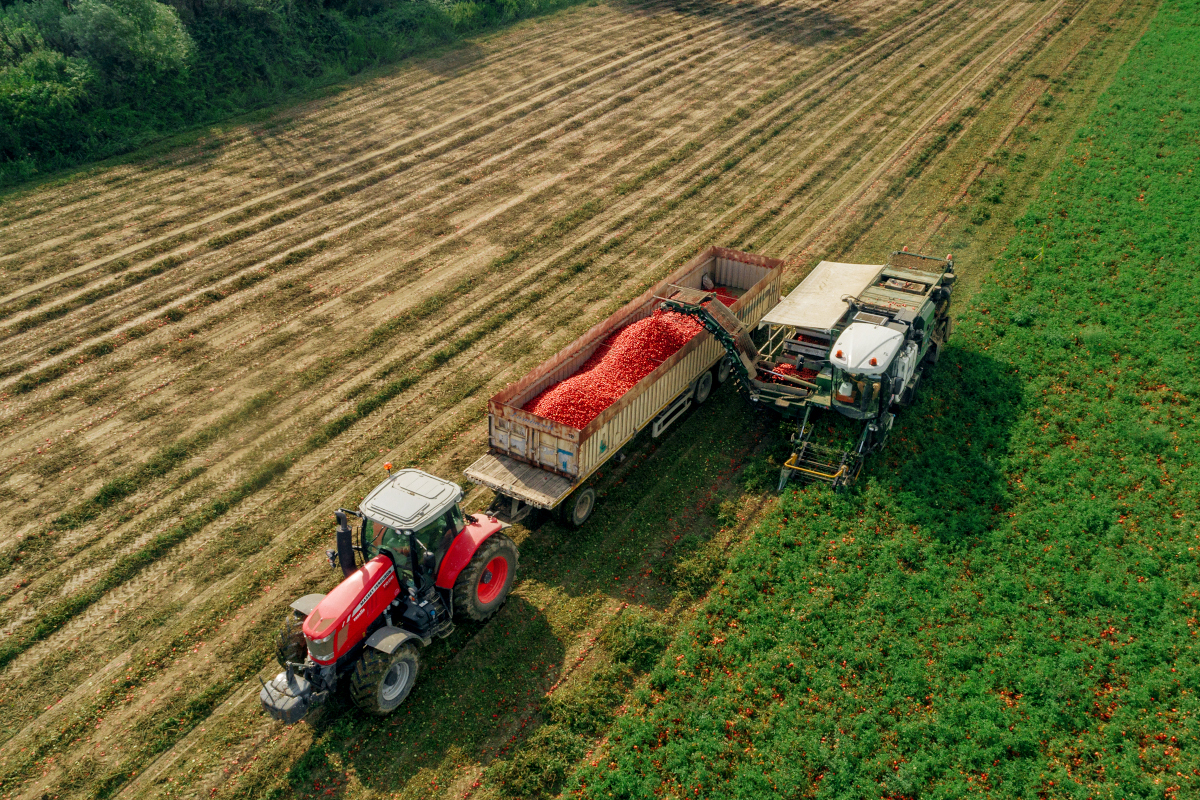
Italy’s 2025 industrial tomato harvest has begun early in the country’s northern regions, with the first deliveries of early-ripening “pomodorino” and “round tomato” varieties arriving at processing facilities. The early start signals a prolonged harvesting season designed to manage significantly increased planting volumes.
Planted acreage in the northern basin—entirely under integrated or organic cultivation—has grown markedly compared to previous years. Organic production now accounts for 9.1% of the total area, consolidating its position within a sector increasingly focused on premium, export–driven products. The expansion is a direct response to rising global demand and aims to offset two years of climate-related production shortfalls that strained supplies of high-quality Italian tomatoes. A uniform planting calendar has raised expectations for a steady harvest and more efficient use of processing capacity.
Giuseppe Romanini, president of the Northern Italy Processing Tomato Interbranch Organisation (OI), said the continued growth in acreage reflects a strategic shift among northern growers. “Farmers are increasingly opting for processing tomatoes over other crops, encouraged by the strength of the supply chain. Producer organizations and processors have worked in close cooperation through the OI, creating a resilient, integrated model that offers clear advantages in competitiveness and in navigating annual challenges.”
Yet while prospects for volume are strong, concerns persist over water availability. Irrigation demand is expected to peak in the coming days and remain high through August unless rainfall resumes. The effects of climate change are increasingly visible, with alternating extremes: 2024 brought record rainfall, while other recent years have seen prolonged drought. Only regions with dedicated water storage infrastructure currently have sufficient reserves, while areas without that are facing restrictions on surface water withdrawals to preserve ecological flows.
